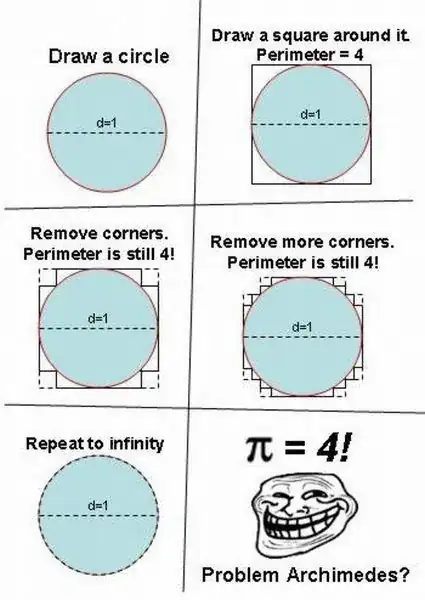I recently bumped into this question which asks why $\pi=4$ is wrong.

And some answers(see the answer of user TCL, for example) stated that this has to do with functions and their derivatives.
Their answers were something like this:
Let $F_n(x)$ be a sequence of curves (the zigzag curves in the above picture) that approach $g(x)$ as n tends to $\infty$.
And $g(x)$ the curve that represents the circle.
$$\lim_{n \to \infty} F_n(x) = g(x).$$
Does not imply
$$\lim_{n \to \infty} F'_n(x) = g'(x).$$
And lengths has to do with derivatives($\int \sqrt{f'(x)+1} \, dx$), therefore convergence of two curves does not mean convergence of their length.
And based upon my understanding of this:

the condition that the function should satisfy for the above implication to hold is that it has to be a continuous function,but the curve(see the linked question) approximating the circle it is not continuous.
Is my understanding correct?
Does convergence of two continuous functions implies the convergence of their derivatives?
If this is the case, then why the function that approximates the circles is not continuous?
I saw this question, But I don't know if its related to my question about continuity?